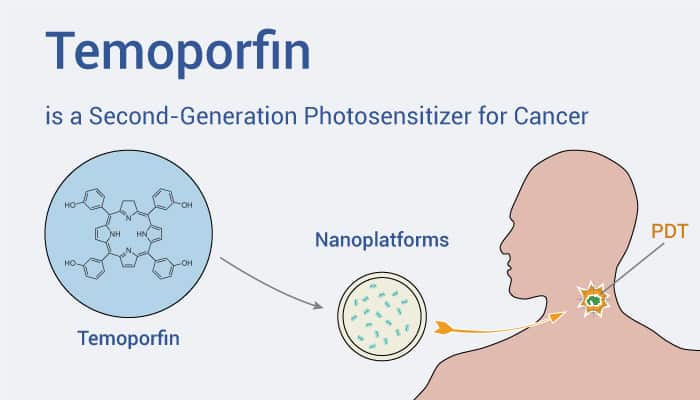Photodynamic therapy (PDT), a phototherapy, is a minimally invasive therapeutic procedure. PDT consists of three essential components-photosensitizer, light and oxygen. None of these is individually toxic, but together they initiate a photochemical reaction that culminates in the generation of a highly-reactive product termed singlet oxygen. Singlet oxygen can rapidly cause significant toxicity leading to cell death via apoptosis or necrosis. PDT is popularly used in treating acne. Meanwhile, PDT shows some efficacy in wet age-related macular degeneration, psoriasis, atherosclerosis and anti-viral treatments. Importantly, PDT can exert a selective cytotoxic activity toward malignant cells. Therefore, it has potential to treat B malignant cancers, including head and neck, lung, bladder and particular skin.
Antitumor effects of PDT derive from three interrelated mechanisms: direct cytotoxic effects on tumor cells, damage to the tumor vasculature, and induction of a robust inflammatory reaction that can lead to the development of systemic immunity. The procedure involves the administration of a photosensitizing agent followed by irradiation at a wavelength corresponding to an absorbance band of the sensitizer. Thus, in the presence of oxygen, a series of events lead to direct tumor cell death, damage to the microvasculature, and induction of a local inflammatory reaction. Therefore, with a number of recent technological improvements, PDT has the potential to become integrated into the mainstream cancer treatment.
 Temoporfin is a photosensitizing agent.
Temoporfin is a photosensitizing agent.
Temoporfin, a photosensitizer, is a synthetic chlorin with light-activated actions. And Temoporfin is excited from the ground state to the first excited singlet state by the application of 652 nm light. Besides, it exhibits a high tumor selectivity with residual photosensitivity for two weeks. Thus, Temoporfin is effective in photodynamic therapy for the treatment of squamous cell carcinoma of the head and neck. It enters cancer cells and is activated via light to produce reactive species which destroy the cell. By the way, the process is dependent on the intracellular interaction of temoporfin with light and oxygen.
All in all, Temoporfin is a photosensitizer for squamous cell carcinoma of the head and neck.
Reference:
Agostinis P, et, al. CA Cancer J Clin. Jul-Aug 2011;61(4):250-81.